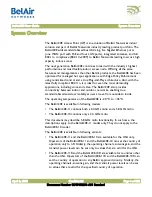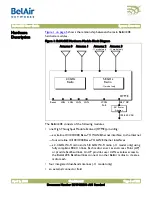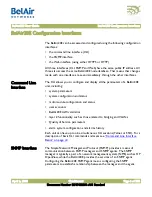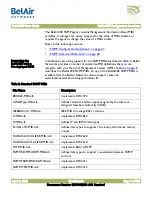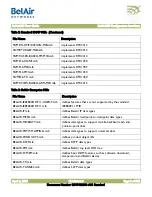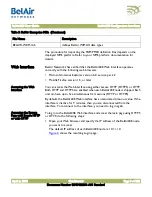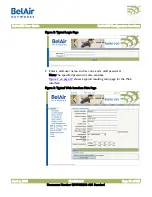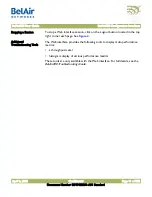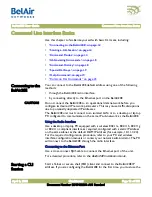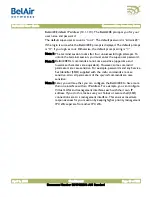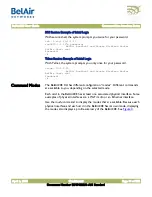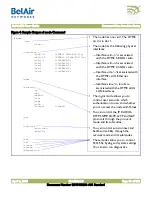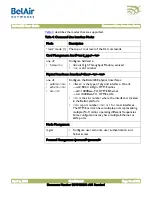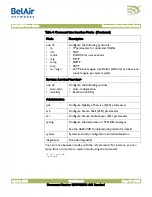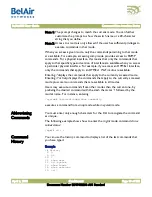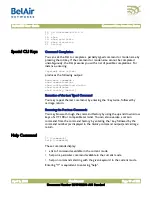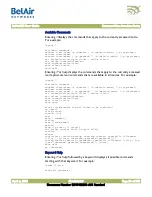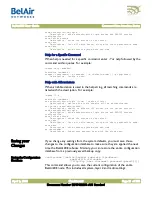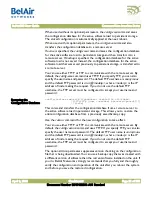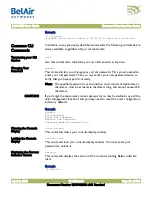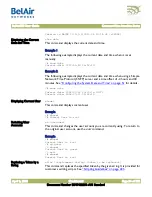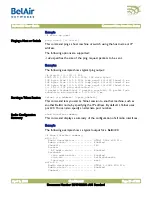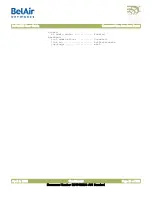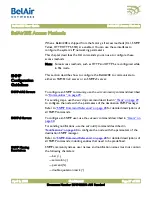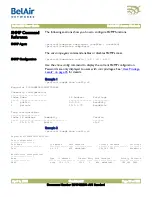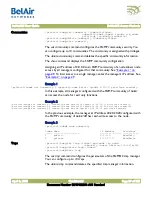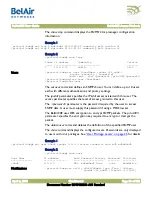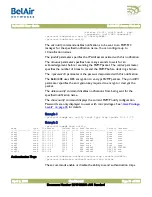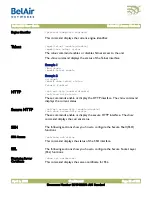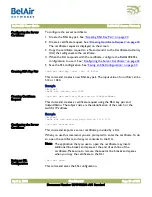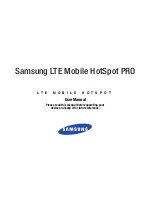
BelAir20E User Guide
Command Line Interface Basics
April 2, 2012
Confidential
Document Number BDTM02201-A01 Standard
Note 1: The prompt changes to match the current mode. You can further
customize the prompt to show the switch name or a 20-character
string that you define.
Note 2: Access to a mode is only allowed if the user has sufficient privileges to
execute commands in that mode.
When you access a given mode, only the commands pertaining to that mode
are available. For example, accessing
snmp
mode provides access to SNMP
commands. For a physical interface, this means that only the commands that
apply to that specific type and version of interface are available when you access
a particular physical interface. For example, if you access an HTMEv1 interface,
only the commands that apply to an HTMEv1 Wi-Fi radio are available.
Entering
?
displays the commands that apply to the currently accessed mode.
Entering
??
or
help
displays the commands that apply to the currently accessed
mode plus common commands that are available in all modes.
Users may execute commands from other modes than the current one, by
prefixing the desired command with the slash character ‘/’ followed by the
mode’s name. For instance, entering:
/system# /protocol/snmp/show community
executes a command from
snmp
mode while in
system
mode.
Abbreviating
Commands
You must enter only enough characters for the CLI to recognize the command
as unique.
The following example shows how to enter the
mgmt
mode command
show
telnet status
:
/mgmt# sh t s
Command
History
You can use the
history
command to display a list of the last commands that
you have typed.
Example
/# history
8 h
9 hi
10 ?
11 show user
12 cd /system
13 show loads
14 show sessions
15 cd /

